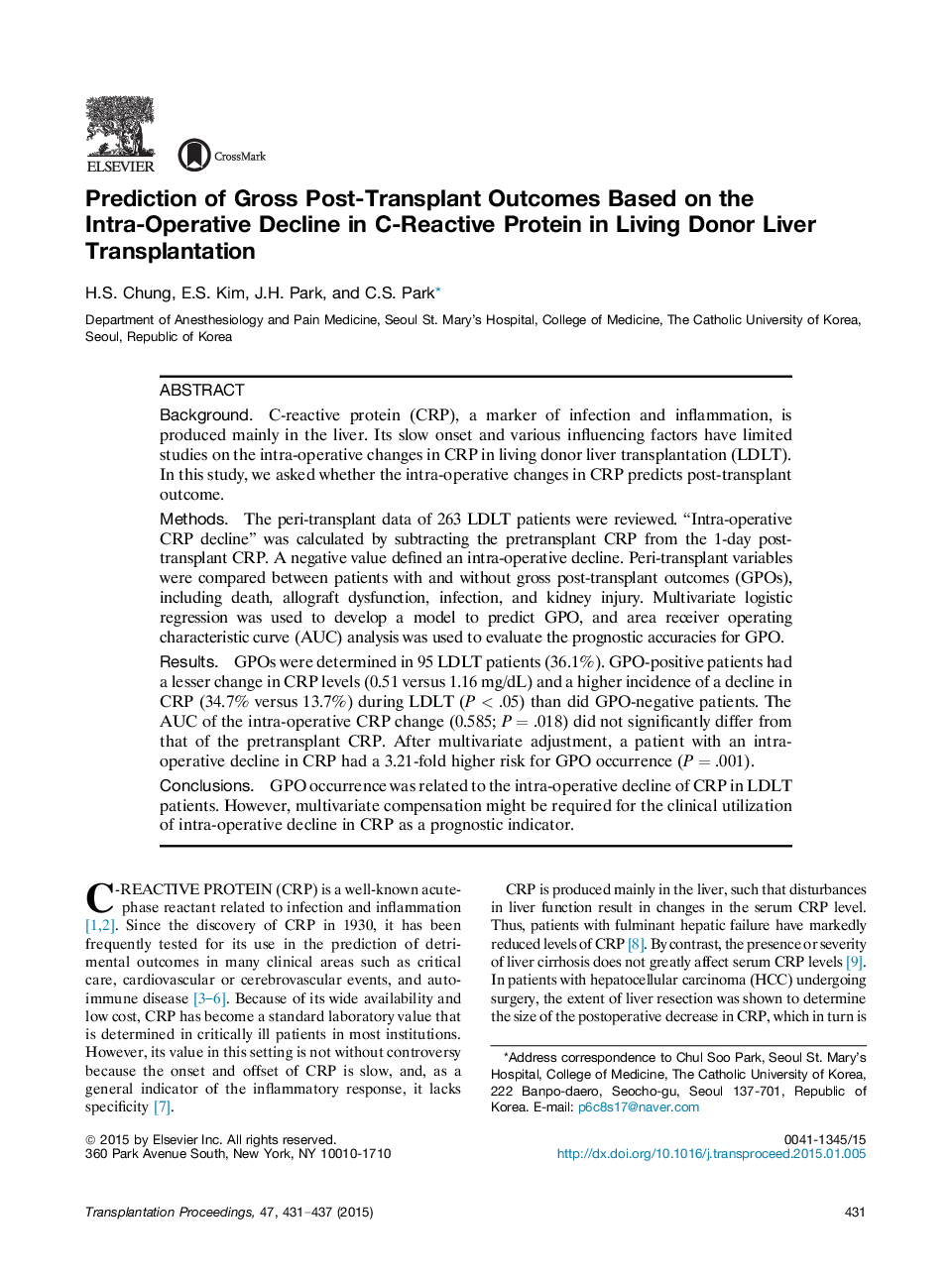| Article ID | Journal | Published Year | Pages | File Type |
|---|---|---|---|---|
| 4257622 | Transplantation Proceedings | 2015 | 7 Pages |
•Intra-operative change in CRP was not inferior to the pretransplant and 1-day post-transplant CRP, model for end-stage liver disease score, and Child-Pugh-Turcotte score regarding the predictive accuracy of gross post-transplant outcome (GPO).•Intra-operative decline in CRP (intra-operative change in CRP <−0.02 mg/dL) showed the optimal combination of the sensitivity and specificity for the prediction of GPO.•The GPO-positive patients with had fewer intra-operative changes and higher incidences of intra-operative decline in CRP than did GPO-negative patients.•The predictive accuracy of solitary intra-operative decline in CRP was not so great, which required other peri-transplant compensation factors to develop a better prediction model for GPO.•In the prediction model for GPO, intra-operative decline in CRP was noted to increase the risk of detrimental post-transplant outcomes by approximately 3 times.
BackgroundC-reactive protein (CRP), a marker of infection and inflammation, is produced mainly in the liver. Its slow onset and various influencing factors have limited studies on the intra-operative changes in CRP in living donor liver transplantation (LDLT). In this study, we asked whether the intra-operative changes in CRP predicts post-transplant outcome.MethodsThe peri-transplant data of 263 LDLT patients were reviewed. “Intra-operative CRP decline” was calculated by subtracting the pretransplant CRP from the 1-day post-transplant CRP. A negative value defined an intra-operative decline. Peri-transplant variables were compared between patients with and without gross post-transplant outcomes (GPOs), including death, allograft dysfunction, infection, and kidney injury. Multivariate logistic regression was used to develop a model to predict GPO, and area receiver operating characteristic curve (AUC) analysis was used to evaluate the prognostic accuracies for GPO.ResultsGPOs were determined in 95 LDLT patients (36.1%). GPO-positive patients had a lesser change in CRP levels (0.51 versus 1.16 mg/dL) and a higher incidence of a decline in CRP (34.7% versus 13.7%) during LDLT (P < .05) than did GPO-negative patients. The AUC of the intra-operative CRP change (0.585; P = .018) did not significantly differ from that of the pretransplant CRP. After multivariate adjustment, a patient with an intra-operative decline in CRP had a 3.21-fold higher risk for GPO occurrence (P = .001).ConclusionsGPO occurrence was related to the intra-operative decline of CRP in LDLT patients. However, multivariate compensation might be required for the clinical utilization of intra-operative decline in CRP as a prognostic indicator.
